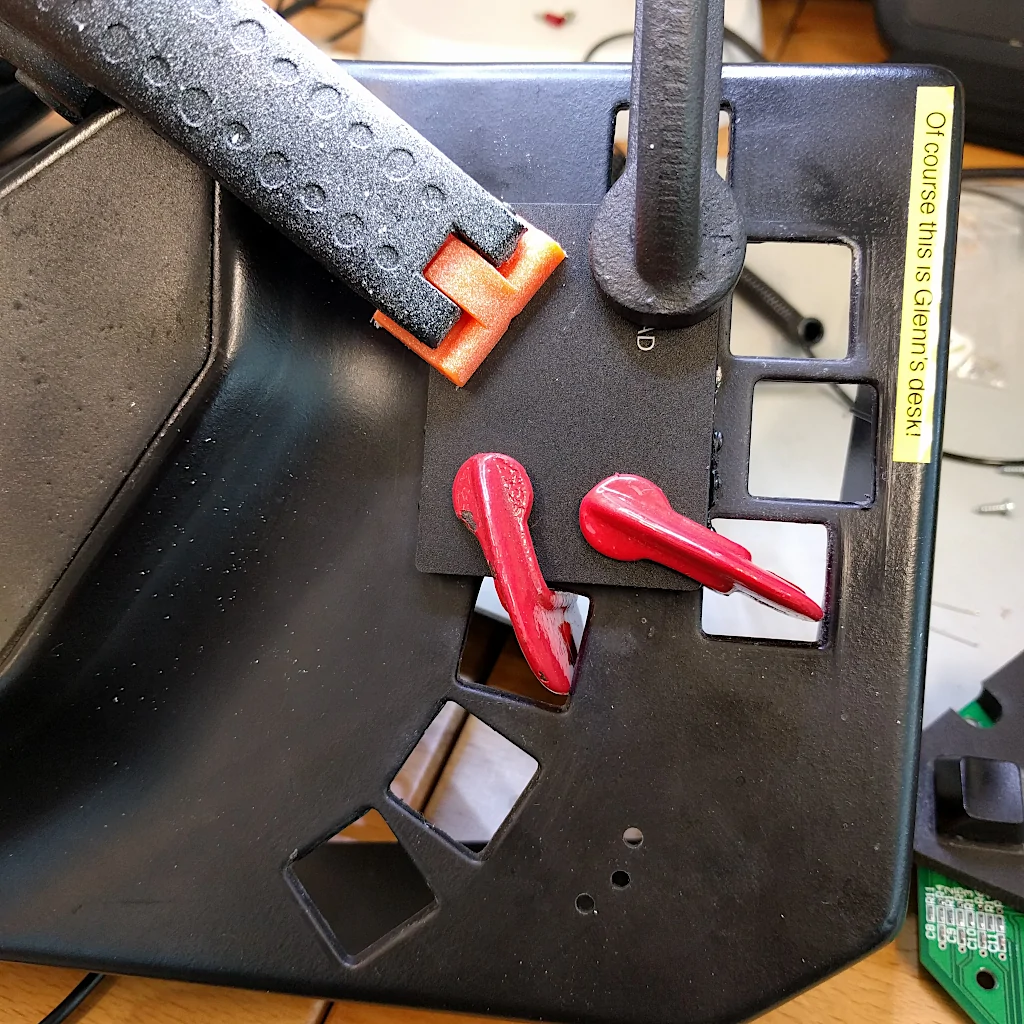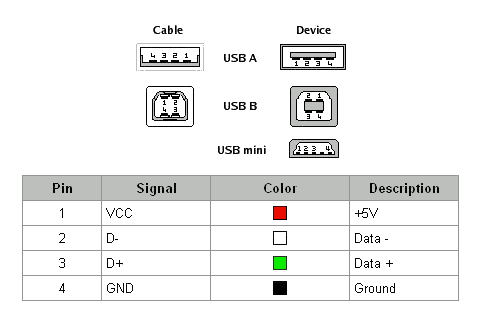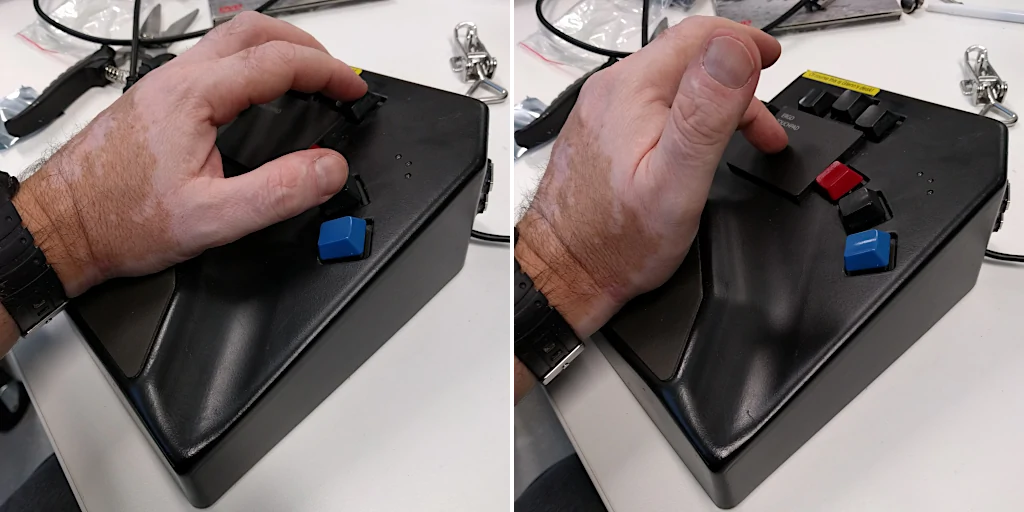Never satisfied
I use a chorded keyboard for general data entry. I also found that I can neatly fit a small USB trackpad between the keys and the palm rest for full one-handed operation. Having two USB cables hanging off the thing was a minor nuscience, though, and I couldn't always guarentee two available USB ports at the destination computer, so would end up also having to cart around and juggle a USB Hub!.
So why not properly integrate them!
So, I got a cheap bare-board USB-2 hub from an online dollar-store, and since it has 4 ports, why not use those extras to add a pair of USB ports to the back of the unit too, since Keyboard USB ports are quite handy (provided they are proper 480Mbps High Speed ports so they can be used for more than just adding a mouse or other low-speed device).

Poping the back off the BAT and removing the circuit board, first I need a hole for the cable from the trackpad. There is a circular plastic moulding mark right next to the center screw post that is in the perfect position, so I popped a hole through there.

I snipped the trackpad's USB cable to about 20cm length and threaded it through the hole.

Applied plastic glue. .... The trackpad came with foam-adhesive backing, but I peeled that all off as it added an extra 4mm to the height of the pad and I wanted to keep the surface of the pad as far below the tops of the keys as I could.

And clamped it down until the glue was properly cured. .... In hindsight I should have cut a small piece of 3-ply wood to the size of the trackpad to protect the surface from the clamps. I managed not to damage the trackpad anyway, but it would have been sensible not to take the chance!

And here is the trackpad cable on the inside of the case. When the BAT is re-assembled, it is squeezed between the case and the upper foam padding that muffles key-klack (the BAT case acts a bit like a guitar body without it and amplifies the key noise!)

As mentioned, since the hub-board has two spare USB ports over what I need for the keyboard and trackpad themselves, I figured I may as well add two USB sockets to the back of the BAT too. I cut out some appropriate holes and plastic-glued them in.

For some reason the trackpad USB cable doesn't use the standard USB cable colours, but applying my multimeter continuity tester to the cut-off length of cable+plug, I was able to determine what colours carried what function.

This is the correct colours:

I then wired up the hub chip before sticking it to the inside of the case with some foam-centered double-sided adhesive tape.

This also involved de-soldering the existing USB-B socket on the BAT circuit board, and soldering on a 20cm strip of USB cable (with the right colours!!).
I replaced the below-circuit-board-anti-klak-foam and plugged in a USB cable with a pin-header end on it (I habitually use a red paint-pen to colour the 5V sides of both the header and the header-plug to avoid confusion when I use these as they are not polarised and getting it backwards will likely fry one or more of the USB devices!). I put a notch in the BAT case for it to neatly exit the case from and a cable tie tightly on the USB cable to stop it from getting pulled out (I prefer this to tying a knot in the cable, which can over-stress the internal wires).

And here is the re-assembled unit from the back. I also gently peeled off and moved the 'infogrip' logo sticker to cover the old USB-B port hole.

Here it all is in use. Because of the way the hand rests on the BAT when chording, fingers remain well clear of the trackpad when entering text.

And the two USB ports, with the wireless dongle for my thumb-ball and a USB storage stick in them.

(The thumb-ball is now optional, but I prefer it to the trackpad, which will mainly see use when I take the BAT walkies to help students in the computer labs with their MicroController programming - one less object to cart about and one less cable to find a USB port for!). I am so used to the ease of typing one-handed on the BAT that having to use a matrix keyboard - even a good one! - actually stresses me a bit!
Hmmm. It looks like the BAT device is now discontinued :-/ . Oh well, I have 3 (one for home, one for work, and a third from when I was working two roles in different offices at work) and I am well-able to build my own (even better!) one if I want more.
I actually have. Twice! Though a it was a version for a language that doesn't have capital letters, so I dropped the blue 'shift' key on that version.

Above is my crude first-prototype. I've moved on from Arduino™ modules to raw-microcontrollers since then!















 Glenn's home page.
Glenn's home page.